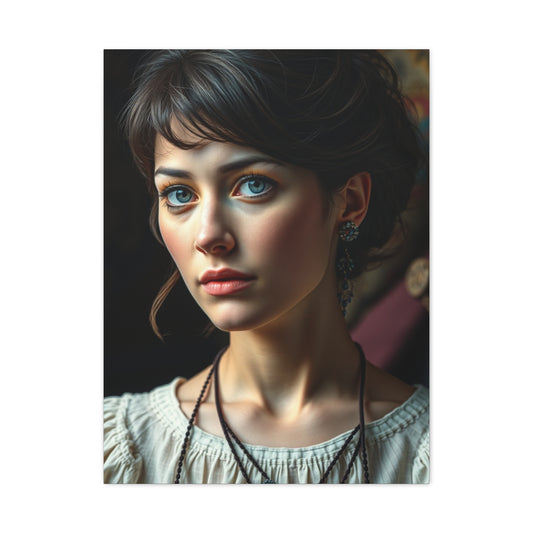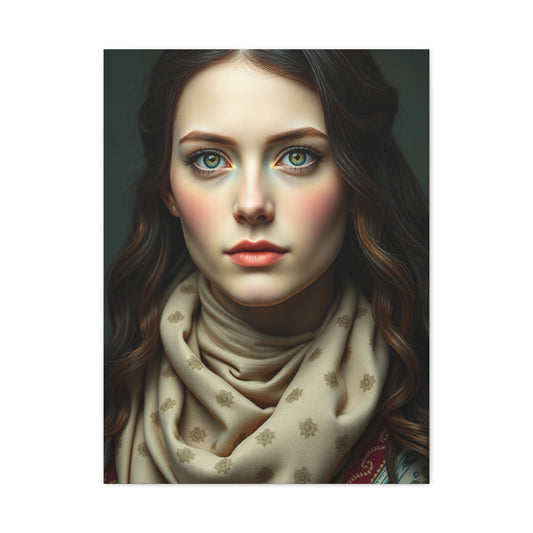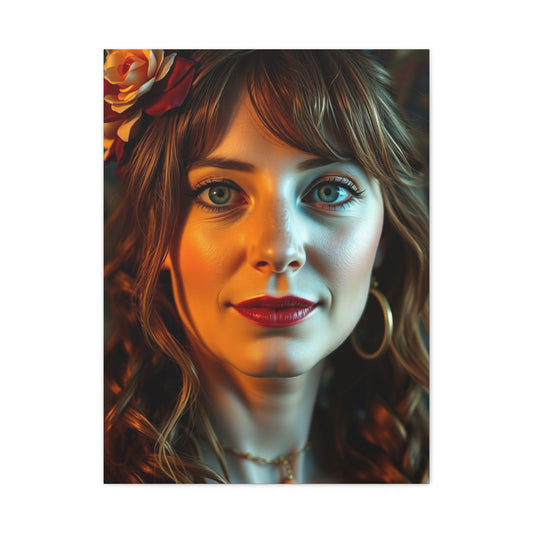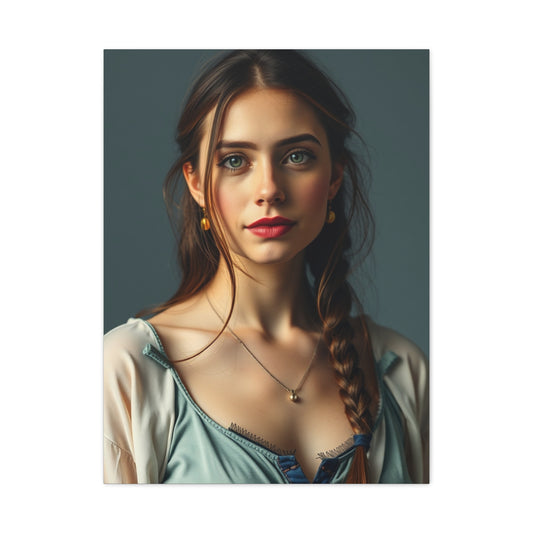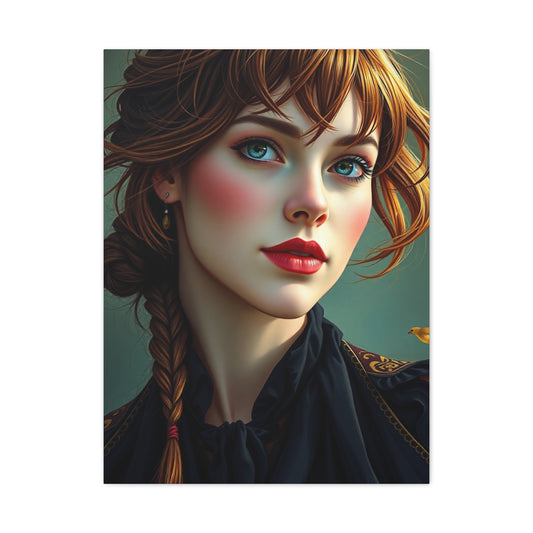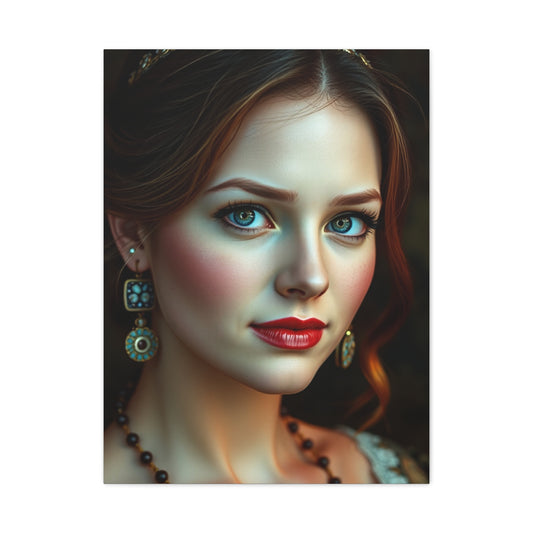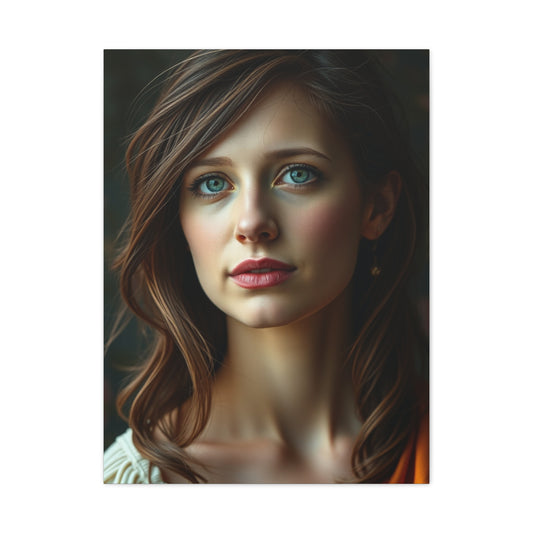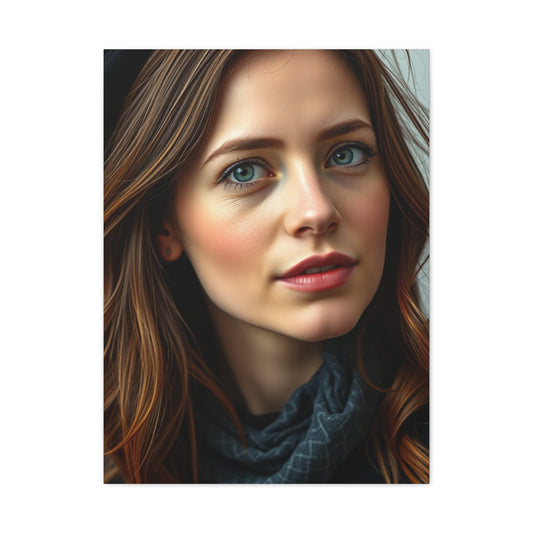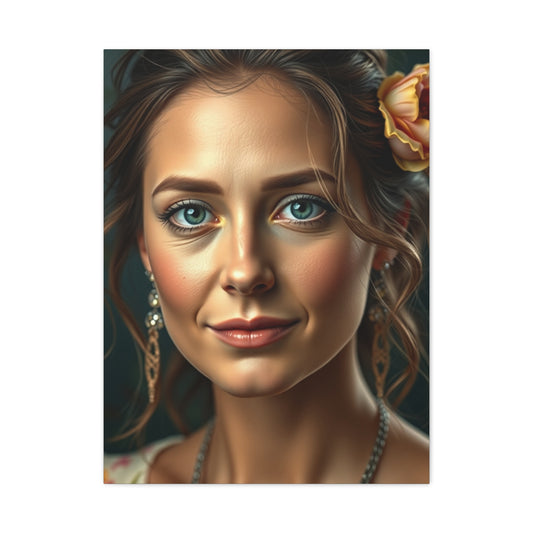The Enchanting Universe of Catrin Welz-Stein's Wall art Digital Collage Artistry
In the contemporary landscape of digital artistry, few creators possess the extraordinary capability to weave together fragments of antiquity with modern sensibilities quite like Catrin Welz-Stein. This remarkable German visual artist has carved an indelible niche within the realm of digital collage creation, transforming disparate historical elements into cohesive narratives that transcend temporal boundaries. Her distinctive approach to artistic expression has garnered international recognition, establishing her as a pioneering force in the evolution of digital mixed-media compositions.
The foundation of Welz-Stein's artistic journey commenced in the picturesque town of Weinheim, nestled within Germany's Baden-Württemberg region. Her formative years were characterized by an innate fascination with visual storytelling, a passion that would eventually crystallize into her signature style of ethereal digital compositions. The artist's educational pursuits led her to Darmstadt, where she immersed herself in the comprehensive study of graphic design principles, acquiring the technical proficiency that would later serve as the bedrock for her innovative artistic endeavors.
Following her academic achievements, Welz-Stein embarked upon a professional trajectory that spanned multiple continents, accumulating invaluable experience within advertising agencies across Germany, the United States, and Switzerland. This international exposure provided her with diverse cultural perspectives and artistic methodologies, elements that would eventually permeate her unique creative approach. The year 2009 marked a pivotal transformation in her artistic journey, as she transitioned from conventional commercial design work to the exploration of digital collage artistry.
The metamorphosis into digital collage creation represented more than a mere career shift; it embodied a profound artistic awakening that allowed Welz-Stein to explore the liminal spaces between reality and imagination. Her compositions demonstrate an exceptional ability to synthesize elements from different epochs, creating visual narratives that simultaneously celebrate historical aesthetics while embracing contemporary digital possibilities. This juxtaposition generates a temporal dialogue that invites viewers to contemplate the continuity of human experience across centuries.
Childhood Foundations and Formative Artistic Experiences
The genesis of Welz-Stein's artistic sensibilities can be traced to her earliest childhood experiences, where creativity manifested as an instinctual form of expression. According to cherished family anecdotes, her mother frequently recounted tales of a young Catrin who displayed remarkable artistic precocity, creating drawings with passionate dedication and surprising sophistication. Among these early works, a portrait of the iconic Charlie Chaplin stood as a testament to her innate ability to distill complex character traits into simple yet recognizable visual elements.
This particular portrait demonstrated her intuitive understanding of essential visual characteristics, capturing Chaplin's distinctive mustache, signature hat, walking stick, and characteristic waddle through economical pencil strokes. The composition revealed an early comprehension of how minimal visual elements could convey maximum expressive impact, a principle that would later become fundamental to her collage methodology. Unfortunately, this promising early masterpiece has been lost to time, existing now only in the realm of family memory and artistic legend.
The trajectory of Welz-Stein's artistic development received significant momentum through the mentorship of her secondary school art instructor, whose influence proved transformative in shaping her aesthetic sensibilities. This educator possessed a genuine passion for visual arts, dedicating considerable time to his personal painting practice within the school's studio facilities. During intermissions between classes, he extended invitations to his most promising students, allowing them to observe his creative process firsthand and gain insights into the methodical approach required for serious artistic endeavor.
Among the numerous works she witnessed during these privileged studio visits, one particular oil painting left an indelible impression upon her developing artistic consciousness. The composition featured approximately thirty pears arranged within a wooden container, each fruit rendered with meticulous attention to individual characteristics of form, texture, and surface appearance. The educator had devoted extensive time to this piece, treating each pear as a unique entity deserving individual consideration and artistic interpretation.
This remarkable painting served as both technical demonstration and philosophical allegory, illustrating the infinite diversity that exists within apparent uniformity. The instructor's patient dedication to capturing the subtle variations among seemingly identical objects resonated deeply with young Welz-Stein, providing her with a profound understanding of how artistic perseverance could reveal hidden complexities within ordinary subjects. More significantly, this experience introduced her to the aesthetic principles of surrealism, a movement that would later exert considerable influence upon her mature artistic development.
The methodical approach demonstrated by her mentor instilled within Welz-Stein an appreciation for the transformative power of sustained artistic attention. She observed how prolonged engagement with a single subject could reveal previously unnoticed nuances, ultimately generating compositions that transcended mere representation to achieve genuine artistic significance. This lesson in creative dedication would later inform her own approach to digital collage creation, where patient experimentation with multiple elements eventually yields unexpected and meaningful visual narratives.
Artistic Influences and Methodological
The identification of primary artistic influences represents a complex endeavor for Welz-Stein, as her creative development has been shaped by numerous sources spanning different periods, cultures, and artistic movements. However, certain pivotal moments and influential figures have exerted particularly significant impact upon her artistic trajectory, contributing to the formation of her distinctive visual language and methodological approach.
During her undergraduate studies, Welz-Stein encountered a significant challenge in identifying an appropriate artistic medium through which to express her creative vision effectively. This period of exploration and experimentation proved frustrating yet ultimately productive, as it forced her to examine various artistic approaches and evaluate their potential for personal expression. The resolution to this dilemma emerged through the guidance of a perceptive supervising instructor who recognized the potential compatibility between collage techniques and her intended thematic focus.
The specific academic project that catalyzed her discovery of collage art addressed the contemporary issue of stress prevention, a subject that required innovative visual approaches to communicate complex psychological and social phenomena effectively. Her supervising professor suggested exploring collage methodology as a means of visualizing the multifaceted nature of stress-inducing situations, recognizing that this technique could provide the necessary flexibility to represent abstract concepts through concrete visual elements.
Embracing this suggestion with characteristic enthusiasm, Welz-Stein embarked upon an extensive documentation project, photographing numerous everyday situations that commonly generate stress responses in contemporary individuals. This photographic survey encompassed diverse environments and circumstances, from crowded urban spaces to workplace tensions, from domestic challenges to social pressures. The resulting collection of images provided her with a comprehensive visual vocabulary for exploring the phenomenology of modern stress.
The subsequent manipulation of these photographic materials introduced her to the fundamental techniques of collage creation. Through processes of printing, cutting, copying, reduction, enlargement, and reassembly using traditional scissors and adhesive materials, she discovered the transformative potential inherent in the deliberate alienation of familiar imagery. This systematic deconstruction and reconstruction of visual elements revealed how context manipulation could generate entirely new meanings and emotional responses.
The experience proved revelatory, demonstrating how the fragmentation and recombination of familiar images could produce compositions that transcended their original contexts to achieve heightened expressive power. This transformative process of visual alienation provided her with an effective methodology for communicating abstract concepts and emotional states that might otherwise remain ineffable. The success of this initial collage experiment established a profound and enduring love affair with this artistic medium.
From that foundational moment, collage methodology became her preferred vehicle for exploring surreal narratives and visualizing complex emotional territories. The technique's inherent flexibility allowed her to combine disparate elements in ways that generated unexpected associations and meanings, creating visual poems that could communicate on multiple levels simultaneously. This discovery marked the beginning of a lifelong commitment to collage art as both creative practice and personal expression.
Therapeutic Dimensions of Creative Expression
For Welz-Stein, the act of creative expression transcends mere artistic practice to function as an essential component of psychological well-being and personal identity. She characterizes this creative imperative as a fundamental human need, comparable in urgency to basic physiological requirements such as nutrition and hydration. This perspective illuminates the profound role that artistic creation plays in her daily existence, serving not merely as professional activity but as vital sustenance for her emotional and spiritual development.
The equation of creative expression with basic survival needs reflects a deep understanding of art's therapeutic and transformative potential. Through her creative practice, Welz-Stein accesses emotional territories that might otherwise remain unexplored, processing complex feelings and experiences through the medium of visual composition. This therapeutic dimension of artistic creation provides her with a means of self-discovery and psychological integration that extends far beyond the boundaries of conventional artistic practice.
However, this profound dependence upon creative expression does not guarantee consistent productivity or immediate artistic success. Welz-Stein candidly acknowledges that the creative process is characterized by significant fluctuations in inspiration and achievement, with periods of intense productivity alternating with intervals of frustration and apparent stagnation. These variations in creative output represent natural rhythms within the artistic process rather than indicators of professional inadequacy or declining artistic ability.
The reality of creative work frequently involves days that conclude in disappointment, when anticipated artistic breakthroughs fail to materialize or when creative experiments yield unsatisfactory results. During such periods, Welz-Stein experiences the familiar frustration of unfulfilled creative potential, confronting the disparity between artistic vision and achievable execution. These challenging moments serve as reminders of the inherent unpredictability of creative work and the importance of maintaining realistic expectations regarding artistic productivity.
Her approach to managing creative blocks and periods of diminished inspiration emphasizes the importance of strategic disengagement and psychological distance. Rather than forcing continued engagement with frustrating projects, she recognizes the value of stepping away from active creative work to allow subconscious processing and renewed perspective to develop naturally. This wisdom reflects a mature understanding of creative psychology and the counterproductive nature of persistent struggle against creative resistance.
The practice of strategic withdrawal from active creative engagement serves multiple therapeutic functions. It prevents the accumulation of negative associations with specific projects, maintains enthusiasm for future creative endeavors, and allows subconscious mental processes to continue working on artistic challenges outside of conscious awareness. This approach demonstrates sophisticated understanding of creative psychology and the importance of maintaining sustainable artistic practices over extended periods.
Many of Welz-Stein's compositions remain in various stages of completion, awaiting the perfect moment for continued development or final resolution. Rather than viewing these unfinished works as failures or missed opportunities, she regards them as creative resources that await their appropriate moment for completion. This perspective transforms apparent creative setbacks into future possibilities, maintaining optimism about eventual artistic resolution while acknowledging the natural rhythms of creative development.
The phenomenon of creative breakthrough represents one of the most rewarding aspects of Welz-Stein's artistic practice. Following periods of struggle and apparent stagnation, moments of sudden clarity and effortless progress emerge unexpectedly, transforming previous difficulties into smooth, intuitive creative flow. These breakthrough experiences validate her patient approach to creative challenges while providing renewed energy and enthusiasm for continued artistic exploration.
Multimedia Artistic Practice
While digital collage creation represents the primary focus of Welz-Stein's contemporary artistic practice, her creative engagement extends significantly beyond the boundaries of purely digital expression. The integration of traditional artistic techniques with digital methodologies creates a comprehensive creative practice that addresses different aspects of artistic expression and provides varied outlets for creative exploration. This multimedia approach reflects a mature understanding of how different artistic media can complement and inform each other.
Her engagement with ceramic arts represents a significant departure from digital creation, involving direct physical manipulation of malleable materials and traditional firing processes that connect her to centuries of ceramic artistic tradition. Working with ceramics provides tactile experiences that are impossible to achieve through digital means, engaging different sensory modalities and requiring entirely different sets of technical skills. The unpredictable nature of ceramic processes also introduces elements of chance and surprise that complement her experimental approach to digital composition.
The practice of traditional painting with oil and acrylic media offers another avenue for artistic exploration that emphasizes direct physical engagement with artistic materials. These traditional painting techniques require the development of manual dexterity, color mixing skills, and understanding of paint application methods that differ significantly from digital image manipulation. The irreversible nature of paint application also demands different creative decision-making processes and greater commitment to individual artistic choices.
Her approach to traditional painting typically begins with digital design development, utilizing computer-based tools to explore compositional possibilities and refine conceptual elements before committing to physical canvas execution. This hybrid methodology combines the flexibility of digital experimentation with the irreversible commitment required by traditional painting techniques. The digital preparation phase allows for extensive exploration of possibilities while the physical execution phase provides the satisfaction of direct material engagement.
The transition from digital design to physical canvas execution involves significant technical and aesthetic considerations. Digital compositions must be adapted to accommodate the different visual qualities of paint media, canvas textures, and traditional artistic techniques. This translation process often reveals new creative possibilities while also presenting unique challenges that require innovative problem-solving approaches.
The craftsmanship demands of traditional painting provide valuable balance to the purely digital aspects of her artistic practice. Manual painting techniques require extended periods of focused physical activity that engage different aspects of creative consciousness than digital manipulation. This physical engagement with artistic materials provides grounding experiences that complement and inform her digital creative work.
The ongoing development of traditional painting skills represents a continuous learning process that maintains creative humility and enthusiasm for artistic growth. Despite her established expertise in digital composition, her approach to traditional painting embraces the beginner's mind, acknowledging the extensive technical knowledge required for mastery of these time-honored artistic techniques. This attitude of continuous learning helps prevent creative complacency while opening new avenues for artistic development.
The future presentation of traditional paintings represents an exciting prospect that awaits the achievement of sufficient technical confidence and artistic satisfaction. Her cautious approach to public presentation of these works demonstrates respect for traditional artistic standards while also reflecting personal artistic integrity. The eventual revelation of these works will provide audiences with new perspectives on her creative range and artistic development.
Complexity in Featured Compositions
Among the extensive portfolio of compositions created throughout her artistic career, certain works stand out as particularly representative of Welz-Stein's creative vision and technical achievement. These featured pieces demonstrate the sophisticated integration of visual elements, narrative complexity, and symbolic depth that characterizes her most successful artistic endeavors. The analysis of specific compositions provides insights into her creative methodology and the conceptual frameworks that guide her artistic decisions.
One composition that holds particular significance within her creative oeuvre has garnered external recognition through awards and critical acclaim, validating the artistic achievement represented by this piece. The recognition received from respected publications and artistic institutions confirms the successful integration of technical proficiency with meaningful creative expression. Such external validation provides important confirmation of artistic merit while also contributing to broader public awareness of her creative work.
The composition draws upon the beloved literary classic "Alice in Wonderland," utilizing this universally recognized narrative framework as a foundation for personal artistic interpretation. The choice of this particular source material reflects sophisticated understanding of how familiar narratives can serve as vehicles for exploring universal themes and psychological territories. The Alice narrative provides rich symbolic resources while offering audiences immediately recognizable entry points into the artist's personal creative vision.
The visual presentation features Alice as the central figure, positioned within a fantastical environment that suggests the threshold between ordinary reality and extraordinary possibility. The inclusion of the white rabbit serves both narrative and symbolic functions, referencing the original literary work while also representing the invitation to transcend mundane experience in favor of imaginative exploration. This figure serves as a guide or catalyst for the transformative journey that the composition depicts.
The conceptual framework underlying this composition addresses fundamental themes related to psychological exploration and the relationship between conscious and unconscious mental territories. Alice's journey into wonderland represents the individual's capacity to access hidden aspects of personal psychology through imaginative engagement. This interpretation transforms the familiar children's story into a sophisticated meditation on psychological development and self-discovery.
The incorporation of drawer imagery provides a particularly compelling symbolic element within the overall composition. These drawers represent compartmentalized aspects of imagination and memory that can be selectively accessed and explored. Each drawer contains potential discoveries and creative possibilities that await investigation. The act of opening these symbolic containers represents the courage required to explore unknown aspects of personal experience and creative potential.
The visual metaphor of accessible imagination compartments suggests that creative resources and imaginative possibilities remain constantly available to those willing to engage with them actively. The drawers serve as repositories of untapped creative potential that can be accessed through deliberate intention and creative courage. This symbolic framework encourages viewers to consider their own capacity for imaginative exploration and creative self-discovery.
The thematic resonance between the Alice narrative and the artist's personal creative philosophy reflects deep personal connection to childhood wonder and imaginative possibility. The composition serves as both artistic statement and personal manifesto, celebrating the continuing relevance of childlike wonder within adult creative expression. This integration of personal significance with universal themes contributes to the composition's broader appeal and lasting impact.
The recognition received for this particular composition validates the successful communication of complex ideas through accessible visual imagery. The ability to create works that operate simultaneously on multiple interpretive levels demonstrates sophisticated artistic maturity and deep understanding of effective visual communication. Such achievements establish important precedents for continued creative development and public recognition.
Audience Engagement
The ultimate purpose of Welz-Stein's artistic creation extends beyond personal expression to encompass the generation of meaningful experiences for viewers who encounter her compositions. This audience-focused perspective reflects mature understanding of art's communicative potential and social responsibility. The intention to create transformative viewing experiences demonstrates commitment to art's capacity for generating positive impact within contemporary society.
Her primary artistic aspiration involves the transportation of viewers into imaginative realms that transcend the limitations of ordinary daily experience. This ambitious goal requires the creation of compositions sufficiently compelling and immersive to temporarily suspend viewers' normal perceptual frameworks and invite them into alternative ways of seeing and experiencing reality. The success of this transportation depends upon the careful orchestration of visual elements that can effectively bridge the gap between mundane consciousness and imaginative possibility.
The desired outcome of viewer engagement involves temporary enchantment that provides respite from contemporary pressures and concerns. This focus on enchantment reflects understanding of art's therapeutic potential and its capacity to provide psychological restoration through aesthetic experience. The creation of such moments requires sophisticated understanding of visual psychology and the emotional triggers that can generate meaningful aesthetic responses.
Rather than attempting to convey specific messages or promote particular ideological positions, her artistic approach emphasizes the creation of open-ended experiential opportunities that allow individual viewers to discover personal meanings and connections. This non-didactic approach respects audience autonomy while maximizing the potential for authentic personal engagement with the artistic content. The avoidance of heavy-handed messaging allows compositions to function as catalysts for individual reflection rather than vehicles for artistic propaganda.
The feedback received from individuals who have encountered her work provides valuable insights into the effectiveness of this approach to artistic creation. Many responses confirm the successful achievement of her intended goals, with viewers reporting meaningful emotional connections and transformative viewing experiences. These testimonials validate the artistic strategies employed while also providing guidance for continued creative development.
Particularly moving responses often involve personal stories of how specific compositions have provided comfort, inspiration, or insight during challenging life circumstances. These accounts demonstrate art's capacity to function as emotional support and spiritual resource for individuals facing various personal challenges. The ability to provide such meaningful assistance through artistic creation represents one of the most rewarding aspects of professional artistic practice.
The deep emotional connection that many viewers establish with her compositions reflects successful integration of universal themes with personally resonant imagery. The ability to create work that speaks to diverse audiences while maintaining artistic integrity demonstrates sophisticated understanding of effective visual communication. Such widespread appeal confirms the universal relevance of the themes and emotions explored through her artistic practice.
The international reach of her artistic work, facilitated by digital distribution platforms and online galleries, has enabled connections with audiences across different cultures and geographical locations. This global accessibility has revealed the universal appeal of her artistic vision while also providing diverse perspectives on the meaning and significance of her creative work. The cross-cultural appreciation of her compositions confirms their success in addressing fundamental human experiences and emotions.
The honor that she expresses regarding the widespread impact of her artistic work reflects appropriate humility and gratitude for the privilege of meaningful artistic communication. This attitude of grateful service demonstrates mature understanding of the artist's role within broader society and the responsibility that accompanies the ability to move and inspire others through creative expression. Such humility enhances the authenticity and effectiveness of her artistic communication.
Digital Artistry Evolution
The technical aspects of Welz-Stein's digital collage creation involve sophisticated manipulation of digital imagery through professional-grade software applications and innovative creative techniques. Her mastery of these digital tools enables the seamless integration of disparate visual elements while maintaining convincing compositional unity. The technical proficiency required for this level of digital artistry represents years of dedicated learning and experimentation with evolving software capabilities and creative methodologies.
The evolution of digital artistic tools has significantly expanded the creative possibilities available to contemporary collage artists, providing unprecedented control over visual elements and unlimited opportunities for experimentation and revision. Advanced image editing software offers extensive libraries of manipulation tools, filters, effects, and compositional options that would be impossible to achieve through traditional physical collage techniques. These technological capabilities have democratized access to sophisticated artistic techniques while also raising the standards for professional digital artistic creation.
Her approach to digital tool utilization emphasizes creative expression over technical virtuosity, ensuring that technological capabilities serve artistic vision rather than dominating it. This balanced perspective prevents the common pitfall of allowing technical possibilities to overshadow creative content, maintaining focus on meaningful artistic communication rather than mere technical demonstration. The subordination of technique to creative purpose demonstrates mature artistic judgment and sophisticated understanding of effective artistic communication.
The selection and acquisition of appropriate source materials requires sophisticated understanding of copyright law, fair use principles, and ethical considerations related to the utilization of existing imagery in original artistic compositions. The reliance on public domain resources reflects responsible artistic practice while also providing access to historically significant imagery that enhances the conceptual depth of finished compositions. This ethical approach to resource utilization demonstrates professional integrity and respect for other creators' intellectual property rights.
The process of source material preparation involves extensive preliminary work including image research, quality assessment, resolution optimization, and preliminary editing to prepare selected elements for integration into larger compositions. This preparatory phase requires patience and attention to detail, as the quality of finished compositions depends significantly upon the careful preparation of individual components. The investment of time and effort in proper material preparation demonstrates commitment to professional standards and artistic excellence.
The actual composition assembly process involves complex layering techniques, precise masking operations, color correction procedures, and seamless blending methods that require both technical skill and aesthetic sensitivity. The successful integration of elements from different sources, time periods, and visual contexts requires sophisticated understanding of lighting, perspective, color relationships, and compositional balance. These technical considerations must be addressed while maintaining focus on the overall artistic vision and emotional impact of the developing composition.
The iterative refinement process involves continuous evaluation and adjustment of compositional elements, color relationships, tonal balance, and overall visual impact. This ongoing refinement requires critical artistic judgment and willingness to make difficult decisions about element retention, modification, or removal. The commitment to extensive refinement demonstrates dedication to artistic excellence and understanding that initial compositional ideas typically require significant development to achieve their full potential.
The final output preparation involves technical considerations related to resolution, color profiles, file formats, and distribution requirements for different presentation contexts. Professional digital artists must understand the technical requirements for various output destinations including print media, web display, exhibition presentation, and commercial reproduction. This technical knowledge ensures that finished compositions can be successfully translated into their intended presentation formats without loss of visual quality or artistic impact.
Relevance in Digital Collage Art
The artistic tradition of collage creation has evolved significantly from its early twentieth-century origins in cubist experimentation to contemporary digital manifestations that utilize advanced technological tools and global resource networks. Understanding this historical development provides important context for appreciating the contemporary innovations and contributions represented by current digital collage practitioners. The continuity between traditional and digital collage techniques demonstrates the enduring appeal of this artistic approach across different technological eras.
The pioneering work of early collage masters established fundamental principles and aesthetic possibilities that continue to influence contemporary practitioners working in digital media. The innovative approaches developed by these historical figures provided conceptual frameworks and technical precedents that inform current creative methodologies while also challenging contemporary artists to push beyond established boundaries. The dialogue between historical precedent and contemporary innovation creates rich creative territory for artistic exploration and development.
The democratization of artistic tools and resources through digital technology has significantly expanded access to collage creation while also raising questions about artistic authenticity, originality, and creative value in digital contexts. Contemporary digital artists must navigate these complex issues while developing personal artistic voices that contribute meaningfully to ongoing cultural conversations. The challenge of maintaining artistic integrity within rapidly evolving technological contexts requires sophisticated understanding of both traditional artistic values and contemporary creative possibilities.
The global accessibility of digital artistic platforms has created unprecedented opportunities for international artistic dialogue and cross-cultural creative collaboration. Contemporary digital collage artists can access resources and audiences that would have been impossible to reach through traditional artistic distribution systems. This expanded accessibility has also intensified artistic competition while creating new opportunities for recognition and professional development.
The environmental considerations associated with digital artistic creation represent a significant departure from traditional artistic practices that typically involve physical materials and waste production. Digital creation methods eliminate many environmental impacts associated with traditional artistic materials while introducing different environmental considerations related to energy consumption and electronic waste. These factors contribute to ongoing discussions about sustainable artistic practices in contemporary cultural contexts.
The preservation and archival considerations for digital artistic works present unique challenges that differ significantly from traditional artistic preservation methods. Digital formats evolve rapidly and may become obsolete, threatening the long-term accessibility of contemporary digital artworks. These preservation challenges require proactive planning and institutional support to ensure that current digital artistic achievements remain accessible to future generations.
The market dynamics for digital artistic works continue to evolve as collectors, institutions, and audiences develop new approaches to valuing, acquiring, and presenting digital artistic content. The emergence of digital marketplaces, print-on-demand services, and blockchain-based ownership systems has created new economic opportunities while also raising questions about artistic value and authenticity in digital contexts. These market developments significantly influence the professional opportunities available to contemporary digital artists.
The educational implications of digital artistic creation involve the development of new pedagogical approaches that integrate traditional artistic principles with contemporary technological capabilities. Art education institutions must balance historical artistic knowledge with current technical skills while also preparing students for rapidly evolving professional contexts. This educational challenge requires innovative approaches to curriculum development and resource allocation.
Artistic Identity Formation
The relationship between creative expression and personal psychology represents a fundamental aspect of artistic practice that extends beyond mere technical skill development to encompass deep questions of identity, purpose, and meaning. For artists like Welz-Stein who view creative expression as essential to psychological well-being, the artistic practice functions as both personal therapy and professional activity. This integration of creative work with psychological health creates complex dynamics that influence artistic development and creative output.
The therapeutic dimensions of artistic creation involve multiple psychological mechanisms including emotional processing, cognitive integration, symbolic communication, and identity exploration. Through artistic expression, individuals can explore complex feelings and experiences that might be difficult to address through conventional verbal communication. The visual and symbolic nature of artistic expression provides alternative pathways for psychological exploration and integration.
The development of artistic identity involves ongoing negotiation between personal creative vision and external expectations, market demands, and cultural contexts. Artists must maintain authentic creative expression while also developing professional viability and public recognition. This balance requires sophisticated understanding of both personal creative priorities and external professional requirements.
The role of artistic community and peer relationships significantly influences creative development and professional success. Engagement with other artists provides opportunities for mutual support, creative collaboration, critical feedback, and professional networking. The cultivation of meaningful artistic relationships requires investment of time and energy while providing essential resources for continued creative growth.
The management of creative productivity cycles requires understanding of personal creative rhythms and the development of sustainable working practices. Artists must learn to navigate periods of high productivity and creative blocks while maintaining long-term creative output and professional commitments. This requires sophisticated self-knowledge and adaptive strategies for different phases of creative development.
The integration of artistic practice with other life responsibilities creates ongoing challenges related to time management, financial stability, and personal relationships. Professional artists must develop strategies for balancing creative priorities with practical necessities while maintaining commitment to artistic excellence. This balancing act requires ongoing adjustment and often involves difficult decisions about resource allocation and priority setting.
The psychological impact of public reception and critical evaluation can significantly influence artistic development and creative confidence. Artists must develop resilience to criticism while also remaining open to constructive feedback and growth opportunities. The management of public exposure requires emotional maturity and sophisticated understanding of the relationship between personal creative expression and public communication.
Artistic Legacy in Contemporary Visual Arts
The broader cultural significance of contemporary digital collage art extends beyond individual artistic achievement to encompass important contributions to cultural dialogue, aesthetic development, and social commentary. Artists working in this medium participate in ongoing cultural conversations about technology, history, identity, and human experience. The cumulative impact of these individual contributions helps shape contemporary cultural understanding and aesthetic appreciation.
The documentation and preservation of contemporary digital artistic achievements represents an important cultural responsibility that ensures future access to current creative innovations. The ephemeral nature of digital media creates urgent needs for systematic documentation and archival preservation of significant artistic works. This preservation work requires institutional support and professional commitment to maintaining cultural continuity across technological transitions.
The educational value of contemporary digital artistic work includes both technical instruction and cultural enrichment for diverse audiences. The accessibility of digital art through online platforms provides unprecedented opportunities for artistic education and cultural exchange. These educational dimensions contribute to broader cultural literacy and aesthetic appreciation within contemporary society.
The influence of contemporary digital artists on emerging creative practitioners helps shape the development of future artistic traditions and creative methodologies. The mentorship and inspiration provided by established artists contribute to the continuity and evolution of artistic practices across generational transitions. This influence extends through both formal educational contexts and informal creative communities.
The economic impact of digital artistic creation contributes to broader creative economies while also creating new market opportunities and professional pathways. The success of individual digital artists helps validate digital artistic media while also creating economic opportunities for supporting services and related industries. These economic contributions help establish digital art as a legitimate and viable creative sector.
Conclusion:
Catrin Welz-Stein’s contributions to contemporary digital collage art represent a profound intersection of imagination, technical mastery, and emotional resonance. Her ability to merge historical elements with modern digital techniques has created a body of work that is simultaneously timeless and innovative, demonstrating the vast potential of collage as a medium for storytelling and visual exploration. Through her compositions, Welz-Stein not only conveys aesthetic beauty but also engages viewers in layered narratives that explore memory, imagination, and the psychological landscape of human experience. Her work exemplifies how art can transcend temporal boundaries, blending fragments of past and present into cohesive, visually compelling worlds.
At the heart of Welz-Stein’s practice lies a dedication to meticulous craftsmanship, whether in the precise manipulation of digital images or in the careful integration of traditional artistic techniques. Her approach reflects a sophisticated understanding of both artistic form and emotional content. By juxtaposing seemingly disparate elements—objects from different eras, symbolic figures, and abstract textures—she creates visual dialogues that invite reflection, interpretation, and personal connection. Each composition functions not merely as decoration but as an immersive experience, encouraging viewers to explore hidden narratives and symbolic associations. This ability to transform ordinary images into extraordinary visual stories is a hallmark of her creative vision.
Equally significant is Welz-Stein’s recognition of the therapeutic and transformative power of artistic creation. For her, the act of making art is intertwined with personal well-being and self-expression. This integration of creativity and psychological insight manifests in works that are deeply empathetic, capable of evoking emotional responses and fostering introspection. Her pieces provide audiences with opportunities for aesthetic and emotional engagement, demonstrating the capacity of art to offer solace, inspiration, and renewed perspectives in a complex contemporary world.
Welz-Stein’s work also highlights the evolving possibilities of digital artistry in the 21st century. By embracing technological innovation without allowing it to overshadow her conceptual vision, she demonstrates how digital tools can expand the expressive potential of traditional artistic principles. Her practice serves as a model for balancing technical proficiency with creative authenticity, showing that the true power of digital art lies not in software capabilities but in the artist’s ability to convey meaningful, resonant ideas.
Finally, the global impact of her work underscores the universality of her artistic vision. Through digital platforms, her collages reach diverse audiences, transcending cultural and geographical boundaries to inspire dialogue, reflection, and appreciation worldwide. The recognition and acclaim her work has received reflect both her mastery of the medium and the enduring relevance of her themes—imagination, memory, and the human experience. In this sense, Catrin Welz-Stein’s digital collage artistry is more than a personal achievement; it is a contribution to contemporary culture, offering new ways of seeing, thinking, and feeling.
In conclusion, Welz-Stein’s oeuvre embodies the transformative possibilities of digital collage, combining historical awareness, technical excellence, and imaginative vision. Her work invites viewers into enchanting realms of possibility, challenges conventional perceptions of time and space, and affirms the profound role of art in human life. By seamlessly blending tradition with innovation, the personal with the universal, she has created a lasting artistic legacy that continues to inspire, captivate, and elevate the contemporary visual arts landscape.

